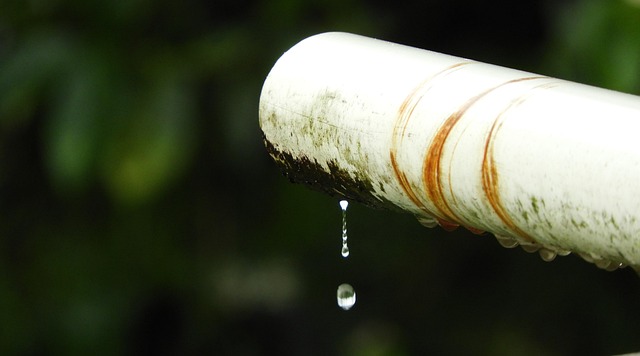[ez-toc]
Life Under the Seafloor: A New Frontier for Deep-Sea Biology
Imagine a world beneath the ocean floor, a realm of darkness and pressure where life, as we know it, is thought to be impossible. But recent discoveries are turning this notion on its head, unveiling a hidden universe teeming with life in one of Earth’s most extreme environments – the deep-sea subseafloor.
Scientists have long known that life flourishes around hydrothermal vents, those dramatic fissures on the ocean floor spewing hot, mineral-rich fluids. However, until recently, the question of whether life could exist within the sediments beneath these vents remained unanswered.
A team of researchers, using the remotely operated vehicle SuBastian on the research vessel Falkor, made a groundbreaking discovery: macroscopic life, animals like tubeworms and mussels, were found to be living within the subseafloor, literally under the ocean bed. This finding, published in Nature Communications, has sent shockwaves through the scientific community, forcing us to rethink our understanding of life’s resilience and the potential for life beyond Earth.
We also Published
- Morphology and Embryology: Comprehensive Insights
Explore the intricacies of Morphology and Embryology with comprehensive insights. - Agnikul Successfully Launches SOrTeD %%page%% %%sep%% %%sitename%%
Agnikul successfully launches SOrTeD, achieving milestones in semi-cryogenic technology and marking India’s first private launch. - Questioning Common Medical Practices: More Harm Than Good?
Questioning Common Medical Practices: such as how common medical practices like thickening liquids for dementia patients and stopping blood pressure medications before surgery may not be as beneficial as previously thought. Explore the conflicting evidence surrounding spinal cord stimulators for chronic pain.
The researchers focused their investigation on a region of the eastern Pacific Ocean known as the “Fava Flow Suburbs,” about 8,250 feet beneath the surface. They used SuBastian‘s tools to drill into the igneous rock on the seafloor and lift sections of lava shelves, revealing cavities harboring these unexpected residents. The team discovered tubeworms (Riftia pachyptila and Osedax alvinae), mussels (Bathymodiolus thermophilus), polychaete worms, and limpets, all thriving within the subseafloor.
Life in the Subseafloor
These creatures have adapted remarkably to the harsh conditions of the subseafloor. The team measured temperatures within the cavities, finding them to be around 64° Fahrenheit (18° Celsius) on average, a relatively comfortable range for these animals. The tubeworms, for instance, have lost their mouths and guts, relying on a symbiotic relationship with bacteria (Candidatus Endoriftia persephone) living within their bodies for sustenance.
The discovery of these macroscopic lifeforms in the subseafloor has profound implications for astrobiology, the study of life beyond Earth. It expands our understanding of the conditions that can support life and provides a tantalizing glimpse into what might exist on other planets or moons.
The Search for Life Beyond Earth
“The study of the subseafloor biosphere for animal life has just begun,” the researchers wrote in their paper. “These efforts will lead to a better understanding of hydrothermal vent biogeochemistry, ecology, and evolution and its impact on global biodiversity, and connectivity, potentially leading to better management of seafloor surface and crustal subseafloor hydrothermal vents.”
The discovery of life under the seafloor strengthens the case for exploring the icy moons of Jupiter, Europa and Ganymede, which are believed to harbor subsurface oceans. If life can flourish beneath the ocean floor on Earth, it raises the possibility that similar ecosystems could exist on these celestial bodies.
Implications for the Future
The subseafloor biosphere remains largely unexplored, but the discovery of this vibrant ecosystem highlights the importance of protecting these fragile habitats from anthropogenic threats, such as deep-sea mining. The researchers emphasize the urgency of safeguarding these areas, as their extent and potential for life remain unknown.
Examples of Subseafloor Life
Here’s a table showcasing some of the creatures discovered in the subseafloor, along with their characteristics:
| Creature | Characteristics |
|---|---|
| Tubeworms (Riftia pachyptila, Osedax alvinae) | No mouths or guts, rely on symbiotic bacteria for sustenance, can grow up to 16 inches long |
| Mussels (Bathymodiolus thermophilus) | Filter feeders, commonly found near hydrothermal vents, live in cavities in the subseafloor |
| Polychaete Worms | Segmented worms with bristles, diverse range of species, inhabit various marine environments |
| Limpets | Marine snails with conical shells, often found attached to rocks, graze on algae |
The Future of Deep-Sea Exploration
The discovery of life under the seafloor is a testament to the resilience and adaptability of life on Earth, and it serves as a powerful reminder of the vastness and complexity of our planet’s biosphere. As we continue to explore the depths of our oceans, we can expect to encounter more wonders and challenges, pushing the boundaries of our understanding of life and its capacity to thrive in the most extreme environments.
RESOURCES
- The deep seafloor is filled with entire branches of life yet to …
- New approach opens window into life below the seafloor
- Scientists discover creatures living beneath the bottom of the …
- Death and life beneath the sea floor
- What conditions exist for life in the deep ocean?
- Scientists Discover New Ecosystem Beneath The Seafloor
- New possibilities for life at the bottom of Earth’s ocean, and …
- Entirely New Ecosystem Appears Under Ocean Floor
- Strange Ecosystem Found Thriving below Seafloor …
- Bizarre life-forms found thriving in ancient rocks beneath …
- Alive and Kicking Under the Sea Floor








0 Comments